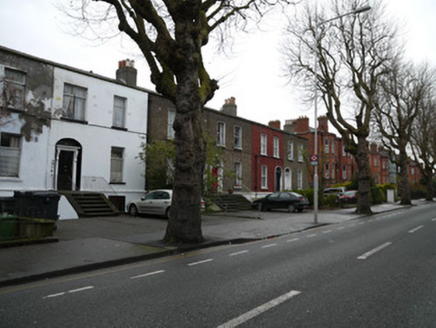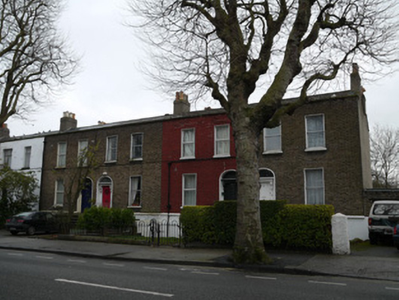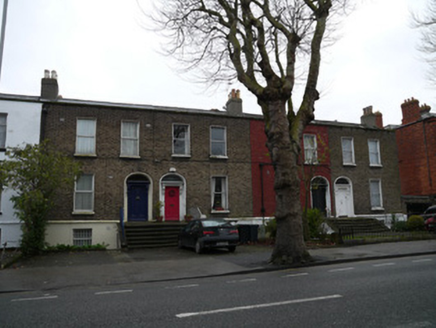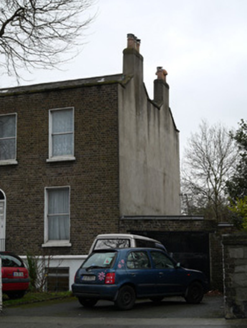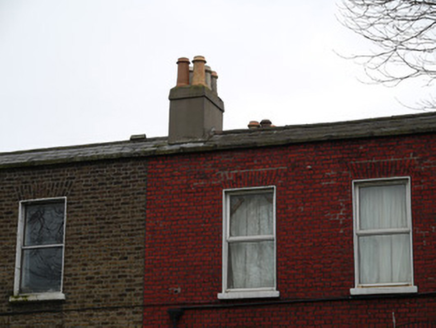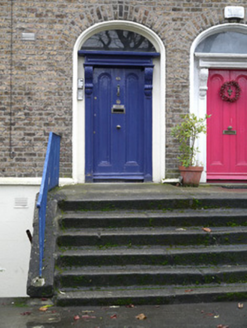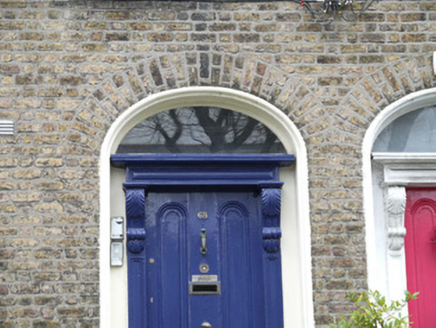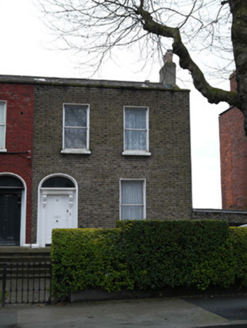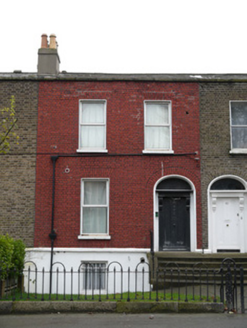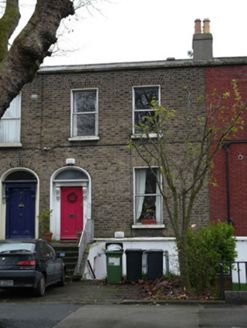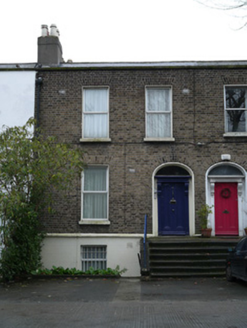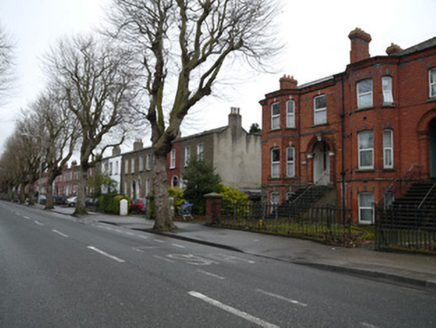Survey Data
Reg No
50070007
Rating
Regional
Categories of Special Interest
Architectural
Previous Name
Carlisle Terrace
Original Use
House
In Use As
Apartment/flat (converted)
Date
1850 - 1860
Coordinates
313576, 235066
Date Recorded
21/12/2012
Date Updated
--/--/--
Description
Group of four terraced two-bay two-storey over basement houses, built c.1855, adjoined neighbouring terraces on south-west and north-east side. Now in use as apartments. Pitched M-profile slate roof having continuous parapet with granite coping to front (north-west) elevation. Rendered chimneystacks having clay chimneypots. Brown brick walls laid in Flemish bond having cut granite plinth course over rendered walls at basement level. Painted bricks to no.64. Rendered walls to south-west gable. Square-headed window openings having patent reveals and painted cut stone sills. Replacement uPVC windows. Elliptical-arched door openings, each having painted masonry surround, with foliate consoles and pulvinated frieze. Plain fanlight. Timber panelled door. Flight of cut granite steps to shared entrance platforms, having cast-iron railings on granite capped retaining wall. Set back from road. No.62 and no.64 having front gardens enclosed by cast-iron railings. Recent paving and vehicular access to no.66 and no.68.
Appraisal
This handsome terrace presents an ordered streetfront to the west portion of North Circular Road. The brickwork and entrance platforms survive in good condition. The matching door surrounds and doors add greatly to the unified appearance of the terrace. Historic maps show that the terrace was named Carlisle Terrace, and Thom's Directory of 1900 numbers Carlisle Terrace as no.34 to no.38 consecutively, before the renumbering of the road in the twentieth century. The North Circular Road was laid out in the 1780s to create convenient approaches to the city. It developed slowly over the following century with the far west and east ends developing last. Carlisle Terrace is listed in Thom's Directory as early as 1860, and the simple form, flat facades, and handmade brick make a pleasing contrast to their later neighbours to the west.
